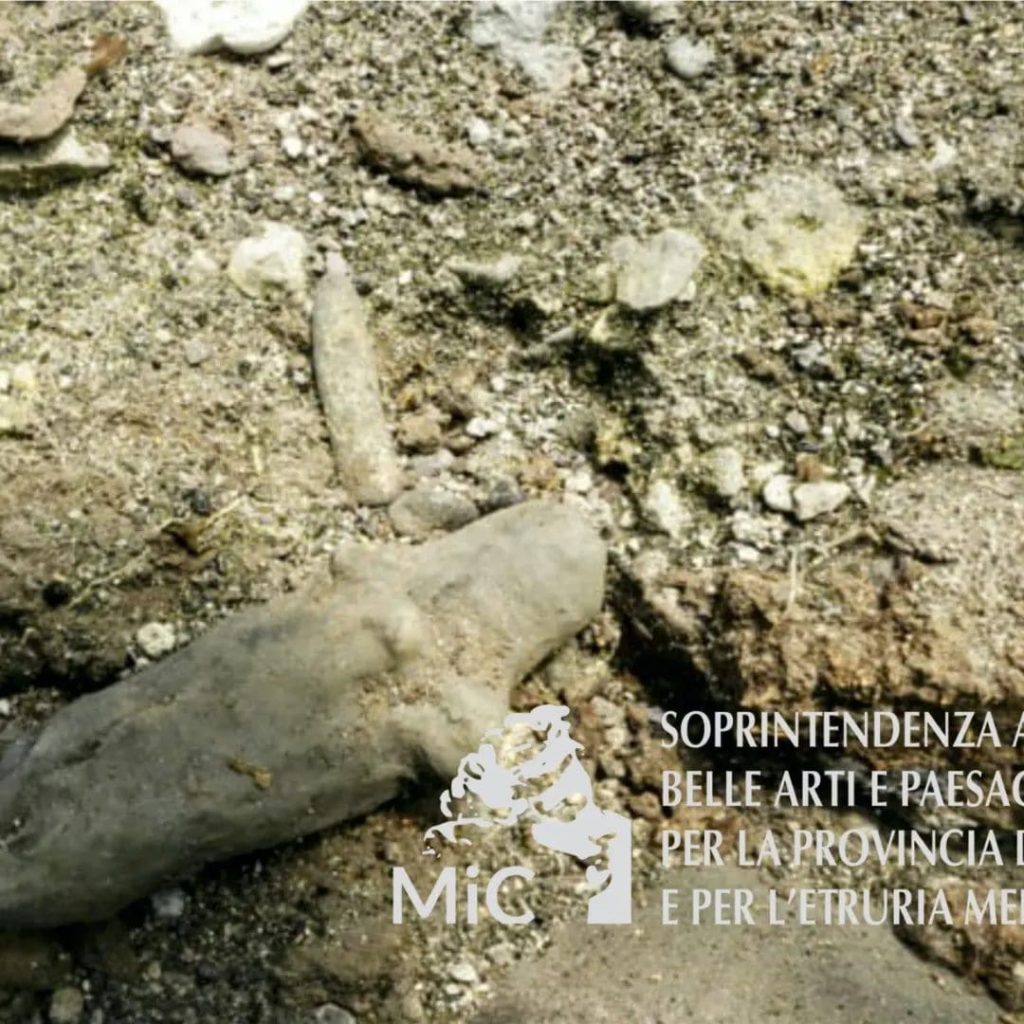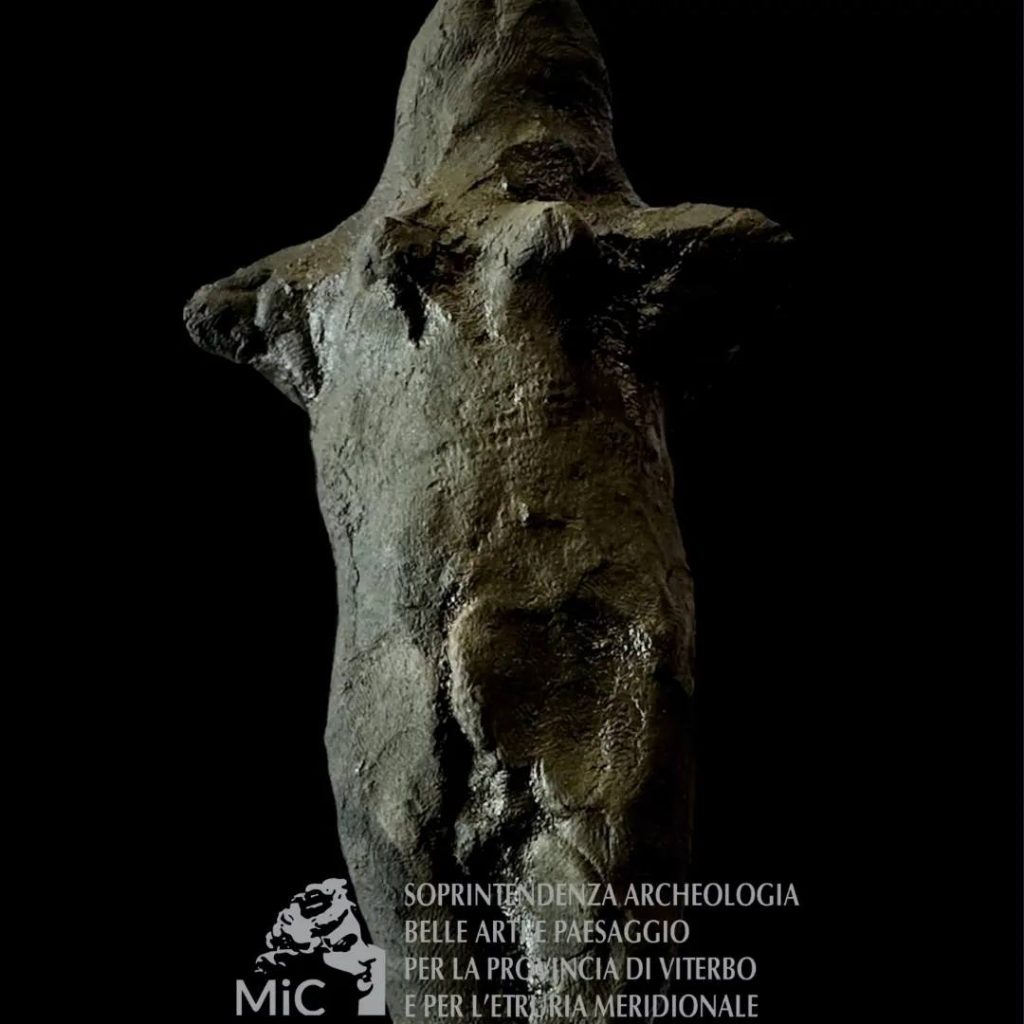
3,000-year-old Iron Age figurine discovered in Lake Bolsena, Italy, with the fingerprints of its maker
In Lake Bolsena, a volcanic lake in central Italy, a 3,000-year-old terracotta female figure was discovered during work at the sunken archaeological site of Gran Carro. Remarkably, after 3000 years underwater, the figure still bears the fingerprints of its maker.
This discovery was made as part of the National Recovery and Resilience Plan (NRRP), which includes the creation of an underwater trail for visitors to explore the site in a unique way.
According to Arkeonews, the unfinished clay figure of a woman, dated between the 10th and 9th centuries BC, looks more like a first draft than a finished work of art. However, the fact that the clay worker did not fully finish the figure does not prevent the discovery from being considered exceptional and unique, shedding light on little-known aspects of daily life in the early Iron Age in southern Etruria.

The figurine is made of poorly fired clay, with fine feminine features. A surprising detail is that it still bears the fingerprints of its creator and the impression of a fabric pattern under its chest, implying that the figure was “dressed” in some kind of garment. Standing six inches tall, the figurine was probably used in prayer rituals.
📣 Our WhatsApp channel is now LIVE! Stay up-to-date with the latest news and updates, just click here to follow us on WhatsApp and never miss a thing!!
The researchers believe that the statue was probably a votive figurine used in domestic rituals. This idea was supported by the researchers’ discovery of other examples of similar figurines from later periods, indicating a long-standing tradition of creating votive figurines in the region.
“This important archaeological context, which gives aspects of daily life from the Early Iron Age (late 10th century BC – early 9th century BC). In southern Etruria, still very little is known.”
The underwater restorers of CSR Restauro Beni Culturali made the discovery and then the staff of the Underwater Archaeological Service took over the work for salvage and initial conservation. The painstaking work of these specialists is crucial so that the piece remains in its original condition and can be thoroughly analyzed.
The rich history of the region, still little known, has been enriched by the discovery of thousands of Iron Age artifacts since the 1960s. The archaeological site of Gran Carro di Bolsena is famous for the Aiola complex, a partially discovered monumental structure that archaeologists still do not understand. Lacking any structural connectors, this stony pile has an elliptical base and a truncated conical shape. Beneath its stony exterior is a mound of earth.

Recently, there have been suggestions that Aiola is not the only structure of its kind in the lake, as it is closely associated with the presence of hot springs with temperatures between thirty and forty degrees Celsius.
The rich Iron Age past of the area was unknown to researchers until 1991, when they uncovered a group of buried stones that they now think are the remains of a large building built near a hot spring. In 2020, when archaeologists examined the soil beneath these stones, they discovered early Iron Age ceramics and other artifacts.
During this period, the city of Aiola was home to a village that left behind thousands of artifacts, including pottery, jewelry and this goddess figurine. Although these artifacts have been discovered by researchers since the 1960s, it is only recently that Aiola’s rich Iron Age past has been thoroughly researched and studied.
The discovery of coins from the fourth-century AD Roman emperor Constantine the Great attests to the continued settlement of the area until the last days of the Roman Empire. The village was later flooded by seismic activity from the Vulsini volcano.
Cover Photo: Soprintendenza Archeologia Belle Arti Paesaggio Etruria Meridionale/ Facebook
You may also like
- A 1700-year-old statue of Pan unearthed during the excavations at Polyeuktos in İstanbul
- The granary was found in the ancient city of Sebaste, founded by the first Roman emperor Augustus
- Donalar Kale Kapı Rock Tomb or Donalar Rock Tomb
- Theater emerges as works continue in ancient city of Perinthos
- Urartian King Argishti’s bronze shield revealed the name of an unknown country
- The religious center of Lycia, the ancient city of Letoon
- Who were the Luwians?
- A new study brings a fresh perspective on the Anatolian origin of the Indo-European languages
- Perhaps the oldest thermal treatment center in the world, which has been in continuous use for 2000 years -Basilica Therma Roman Bath or King’s Daughter-
- The largest synagogue of the ancient world, located in the ancient city of Sardis, is being restored











Leave a Reply